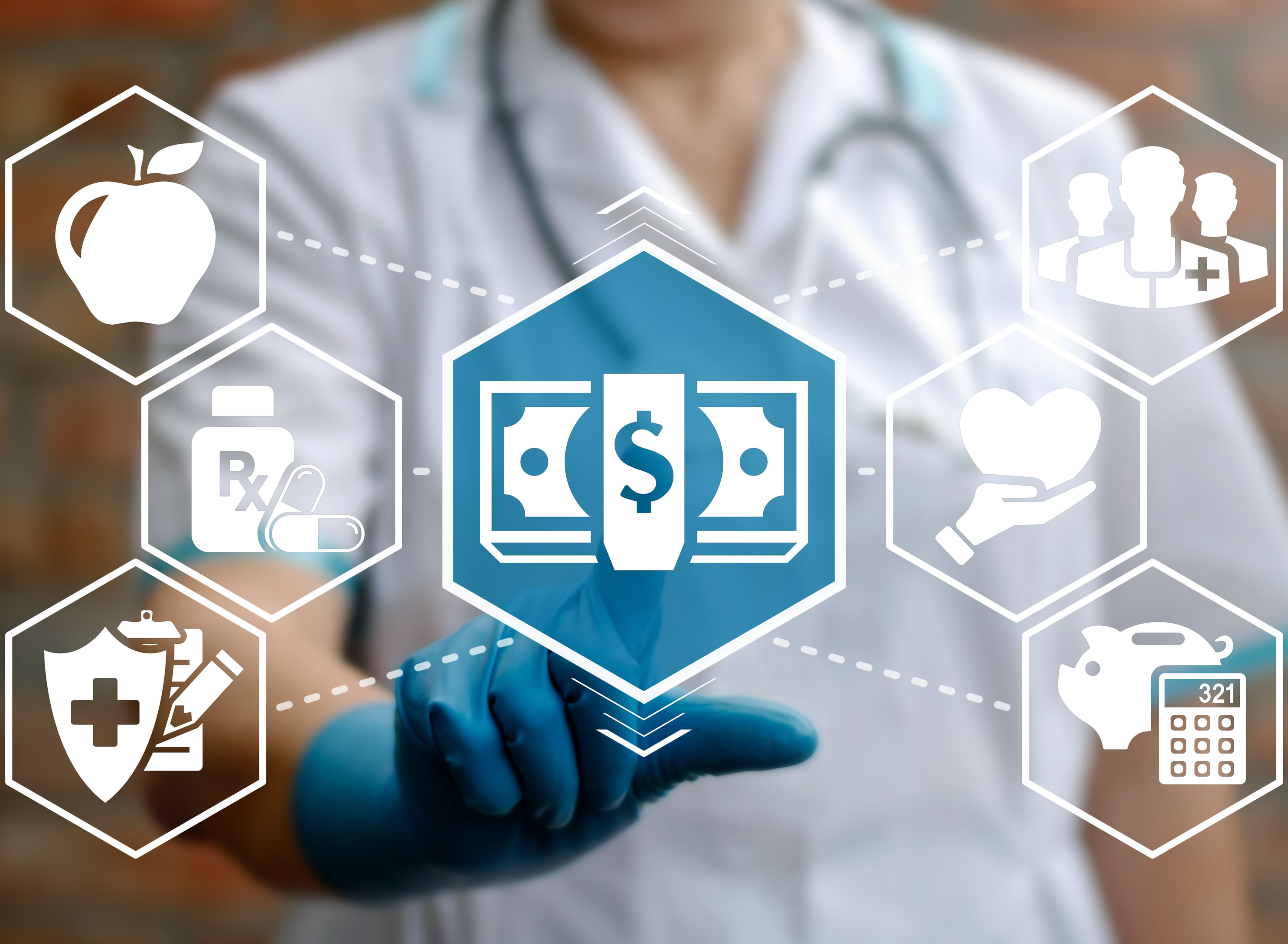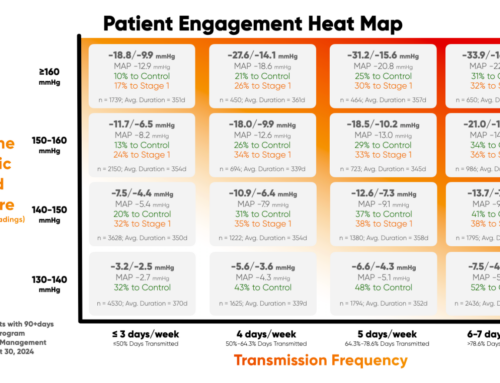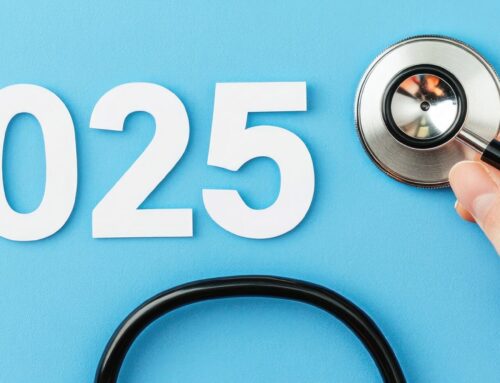Remote Patient Monitoring is transforming healthcare with a growing range of clinical and financial benefits for both patients and medical providers. To combat the enormous challenges that the healthcare industry in the United States faces today, Remote Patient Monitoring is one of the most promising solutions that is making care delivery and health management more proactive, accessible, and cost-effective for all.
Advantages of Remote Patient Monitoring for Healthcare Providers
Higher Productivity
RPM technology enables better utilization of resources, increasing the efficiency and productivity of healthcare organizations. Advanced Remote Patient Monitoring platforms facilitate more effective delivery of care, case triage, and faster communication by collecting, storing, and utilizing near real-time patient data to help providers make better medical decisions.
A reliable, cellular-enabled RPM system allows for timely and personalized monitoring of the vital signs of a large number of remote patients at one time, no matter where they are located. This reduces the burden of physical patient visits, cuts down work overload for the clinical teams and support staff, and eases waiting room congestion.
Simultaneous monitoring of multiple patients using Remote Patient Monitoring software enables healthcare providers to accommodate additional patients to meet the burgeoning demand while enabling them to focus more closely on the patients who need urgent care.
Expanded Revenue Streams

Remote Patient Monitoring allows healthcare providers to add to their billable hours and claim reimbursements for remote interactions with patients, including phone calls and video calls. Moreover, patient no-shows are reduced because the patient is able to receive care management in the comfort of their own home. This adds to the care team’s overall work efficiency.
Utilizing innovative RPM care models, healthcare organizations can set themselves apart from their competitors and increase their revenue generation by attracting new patients and retaining old ones. Medical providers are better placed to increase their revenue streams through CMS CPT codes 99453 and 99454, as well as 99457 & 99458, which provide reimbursement for the time a care team spends on remote monitoring activities like analyzing health data.
Medical providers that utilize high-quality Remote Patient Monitoring devices can gather large amounts of near real-time medical data related to the patient’s vital signs to improve health outcomes and proactively intervene before a critical health event occurs. With a scalable and Electronic Health Record (EHR) integrated Remote Patient Monitoring (RPM) platform RPM-based additional revenue streams can be integrated seamlessly into the workflows of healthcare professionals without causing any disruption to their existing systems.
Greater Patient Engagement, Satisfaction, and Retention
As participants in a Remote Patient Monitoring program, patients have reported feeling more connected with their care team. The education, guidance, and motivation that come along with a virtual care management program empowers patients and allows them to be more proactive and involved in the decisions related to their health.
Apart from the empowerment and a sense of security that an RPM program provides to the patients, it also encourages them to adhere to their medication plan or therapy more diligently. As the patient is aware that they are being monitored and any failure to follow the prescribed health management plan will be notified to the care team, they acquire a better level of patient accountability.
At the other end of the spectrum, Remote Patient Monitoring platforms by design ensure greater involvement of the clinical team and motivate them to guide patients on self-care between virtual appointments. The process becomes more proactive and continuous from both ends, leading to more effective health outcomes.
With an increased level of patient engagement and participation, healthcare organizations using RPM are more likely to experience higher patient satisfaction and patient retention rates. Satisfied patients provide credible word-of-mouth publicity for the organization, which can be an invaluable source of brand building with long-lasting benefits to your healthcare organization’s reputation.
Increased Access to Patient Populations
In the physical form, healthcare organizations are often constrained to serve patients only residing or working in nearby areas. Their access to distant, rural, and underserved segments of the population remains severely limited. Apart from geographical isolation, the high costs of transportation and shortage of doctors also limit the healthcare organization’s ability to serve a larger number of patients from different regions.
Remote Patient Monitoring removes these barriers to a significant extent. No matter where a patient is located, they can benefit from the quality of care that a healthcare organization provides with the help of RPM technology. In particular, the simplicity of cellular-enabled RPM devices further helps in bridging the so-called digital divide in health systems, facilitating less tech-friendly patient populations, including elderly patients, to benefit from the convenience and efficiency that Remote Patient Monitoring using cellular-enabled devices offers.
From a business perspective, access to a larger share of the market allows the healthcare organization to improve health equity and access, and generate higher revenues through RPM, while maintaining the same fixed infrastructure. This brings down the cost per unit of delivery of care, improving the organization’s profitability while also making care more affordable for the patients. Both patients and providers thrive when Remote Patient Monitoring is at the center of the healthcare equation.
Lower Rate of Patient No-Shows and Hospital Readmissions
Patient no-shows, as well as same-day cancellations of appointments, are a considerable drag on the resources of leading healthcare organizations. One of the most common reasons for no-shows is patients simply forgetting their scheduled clinic appointment. Last-minute cancellations and no-shows reduce capacity utilization, create artificial access issues, consume precious administrative time, and above all, adversely impact patient care.
With Remote Patient Monitoring programs, continuity of care is maintained and patients are more conscious about their ongoing care plan because they are proactive participants in it on a daily basis. Physical visits to the provider’s office in a conventional clinic setting are reduced, which cuts down the incidence of patient no-shows and cancellations, without impacting the provider’s revenues.
More importantly, patients requiring routine care monitoring and management for their chronic conditions can mitigate their risk of developing complications with RPM because they don’t miss appointments. When patients are more engaged and involved in their own care with RPM, it can reduce the number of hospital readmissions. This happens because the adherence to medications, therapy, and care plans increases when the patient is enrolled in an RPM program.
Advantages of Remote Patient Monitoring for Patients
Better Quality of Care and Better Health Outcomes
Remote Patient Monitoring provides valuable clinical insights and information to the care team about the patient’s health status in-between appointments, enabling them to make better informed and data-driven clinical decisions. Care delivery becomes more proactive because continuous data allows the care team to understand patient health patterns and how their symptoms change over a period of time.
This allows them to identify trends and make more predictive decisions about the patient’s health before the symptoms worsen. The care team may also be able to analyze how changes in diet, exercise, and lifestyle behaviors drive changes to the patient’s health status and may incorporate these subjective values into their care plan. When patients recognize how these changes impact their health, it motivates them to be more diligent and compliant with their own care.
The risk of emergencies and serious complications is reduced with Remote Patient Monitoring because near real-time data allows healthcare providers to be more alert and ready to address concerns before they become urgent. Comprehensive RPM platforms are able to identify significant changes to patient data and escalate the concern to the appropriate team of physicians or specialists for timely care management. All of this leads to an improved quality of care and better patient outcomes with RPM.
Improved Patient Education, Motivation, and Accountability

Greater personalization and continuous care through Remote Patient Monitoring platforms allow more opportunities to educate and inform patients about their chronic conditions and how they must be managed. When patient-generated health data is transmitted to the care team and analyzed, the team will provide its inputs and feedback in order to claim RPM reimbursement. This allows the patient to receive more valuable insights and education about their condition than they would in the case of episodic in-person appointments.
When patients know that their chronic condition is being continuously monitored by professionals, they not only feel more reassured and secure but are also more likely to feel accountable for their own health. For example, the care team might get alerted if the patient transmits a blood pressure reading out of range, is non-adherent to their medication regimen, or deviates from their care plan. For instance, a heart failure patient may have a sudden spike in body weight, which could indicate a secondary cardiovascular event, and the care team would be notified to proactively intervene.
Patients would make an effort to minimize the occurrence of these types of incidents and become more responsible about self-care. Remote Patient Monitoring programs also help patients see first-hand how not following the instructions for their heart health or blood sugar levels may lead to a serious fluctuation in their vitals, leading to costly and dangerous emergency situations.
On the other hand, when patients diligently follow the prescribed care plan, they can see a measurable difference in their own health parameters. This motivates them to continue managing their chronic condition in sync with their care provider’s instructions as closely as possible. At the same time, thanks to continuous patient engagement, care teams are able to play a more proactive role, offering coaching or guidance on physical activity, sleep, diet, stress management, and lifestyle behaviors such as smoking and drinking.
The synergistic effects of proactive commitment from both the patients and the providers lead to a win-win situation for all with the implementation of a successful RPM program with connected devices, such as blood pressure monitors, blood glucose monitoring devices, and pulse oximeters.
Other Benefits for Patients
Access to Better Care
With Remote Patient Monitoring, patients have greater access to high-quality care, regardless of whether they are located in a physically distant location with inadequate healthcare facilities. Patients have a wider choice and flexibility, and do not necessarily have to limit themselves to care from a nearby health facility. In particular, patients from under-served communities are in a better position to receive an excellent quality of care with the help of telehealth, telemedicine, and virtual care programs that involved Remote Patient Monitoring.
Lower Risk of Infection
Patients with single or multiple chronic conditions, those with low immunity against infections, those recovering from a major treatment or surgery, elderly patients, children, pregnant women, and those at an increased risk from infections such as Covid-19 can benefit more from Remote Patient Monitoring programs. The risks of hospital-acquired infections and other infectious diseases are eliminated when the patient chooses a virtual care program instead of in-person care.
Lower Cost of Care
Remote Patient Monitoring companies are making a demonstrable impact on reducing the overall costs of healthcare. Reduction in the potentially avoidable utilization of over-burdened emergency rooms, as well as a reduced incidence of hospitalizations and readmissions, bring down the costs of care for payers and healthcare organizations.
RPM also enables early acute discharge, successful ER diversion, and chronic condition monitoring at home, lowering the high cost of in-patient care. All these cost reduction benefits are ultimately passed on to the patients, directly or indirectly, bringing down their cost of care.
Better Patient-Provider Relationship
Remote Patient Monitoring facilitates more enriching patient-provider relationships by creating greater opportunities for communication and personalized engagement. Patients feel more independent and confident with the comforting knowledge that their care team is continuously monitoring their condition. More opportunities for education, guidance and coaching strengthen patient loyalty and improve patient satisfaction levels.
In many cases, caregivers have an important role to play in the patient’s care plan. Remote Patient Monitoring platforms can create tools that involve the patient’s caregiver in the care management plan, allowing them access to the patient’s use of RPM devices and their progress. The caregiver can utilize RPM to positively influence the health outcomes of their loved one, and become an important external support factor in the event of an emergency. All these elements help in deepening patient-clinician trust and cooperation.
Lead from the Front in Healthcare Delivery with HealthSnap’s Remote Patient Monitoring Platform
Remote Patient Monitoring offers a one-of-its-kind opportunity to deliver continuous, proactive, and remote patient care across the care continuum. You can seize the opportunity and build a position of leadership in the industry by partnering with HealthSnap. Our integrated Virtual Care Platform is enabling healthcare organizations to bring care teams together with the power of Remote Patient Monitoring (RPM) and virtual care management programs, such as Chronic Care Management (CCM).
HealthSnap’s HIPAA-compliant and HITRUST-certified innovative remote monitoring solutions will help improve patient outcomes and help boost your revenues at the same time. To learn more about the company or to request a demo of its RPM program, call today at 888-780-1872 or click here to schedule a consultation.






